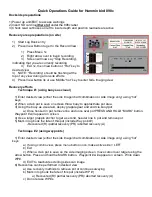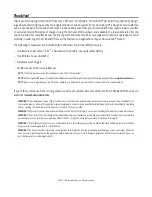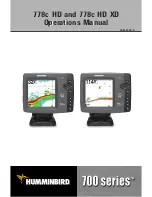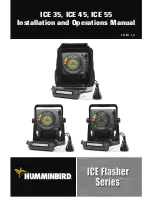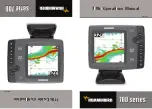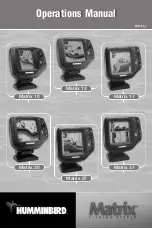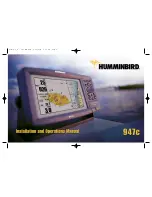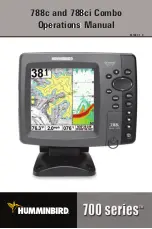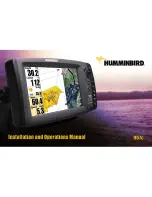
20
INSIDE THE HULL TRANSDUCER INSTALLATION
NOTE:
If you have a puck transducer, please use the procedure found in the
Inside the
Hull Mounting, Puck Transducers Only
section instead.
In-hull mounting generally produces good results in single-thickness fiberglass-
hulled boats. Humminbird® cannot guarantee depth performance when transmitting
and receiving through the hull of the boat, since some signal loss occurs. The amount
of loss depends on hull construction and thickness, as well as the installation
position and process.
This installation requires slow-cure two-part epoxy. Do not use silicone or any other soft
adhesive to install the transducer, as this material reduces the sensitivity of the unit. Do
not use five-minute epoxy, as it has a tendency to cure before all the air bubbles can be
purged, thus reducing signal strength.
NOTE:
In-hull mounting requires an installed and operational depthsounder.
1. Locating the Transducer Mounting Position
Decide where to install the transducer on the inside of the hull. Consider the following
to find the best location:
• Observe the outside of the boat hull to find the areas that are mostly free from
turbulent water. Avoid ribs, strakes and other protrusions, as these create
turbulence.
• As a general rule, the faster the boat can travel, the further aft and closer to the
centerline of the hull the transducer has to be located in order to remain in contact
with the water at high speeds.
2. Trial Installation
You will not be able to adjust the mounting after an inside the hull transducer is
installed. It is best, therefore, to perform a trial installation first that includes running
the boat at various speeds, in order to determine the best mounting area before
permanently mounting the transducer.


































